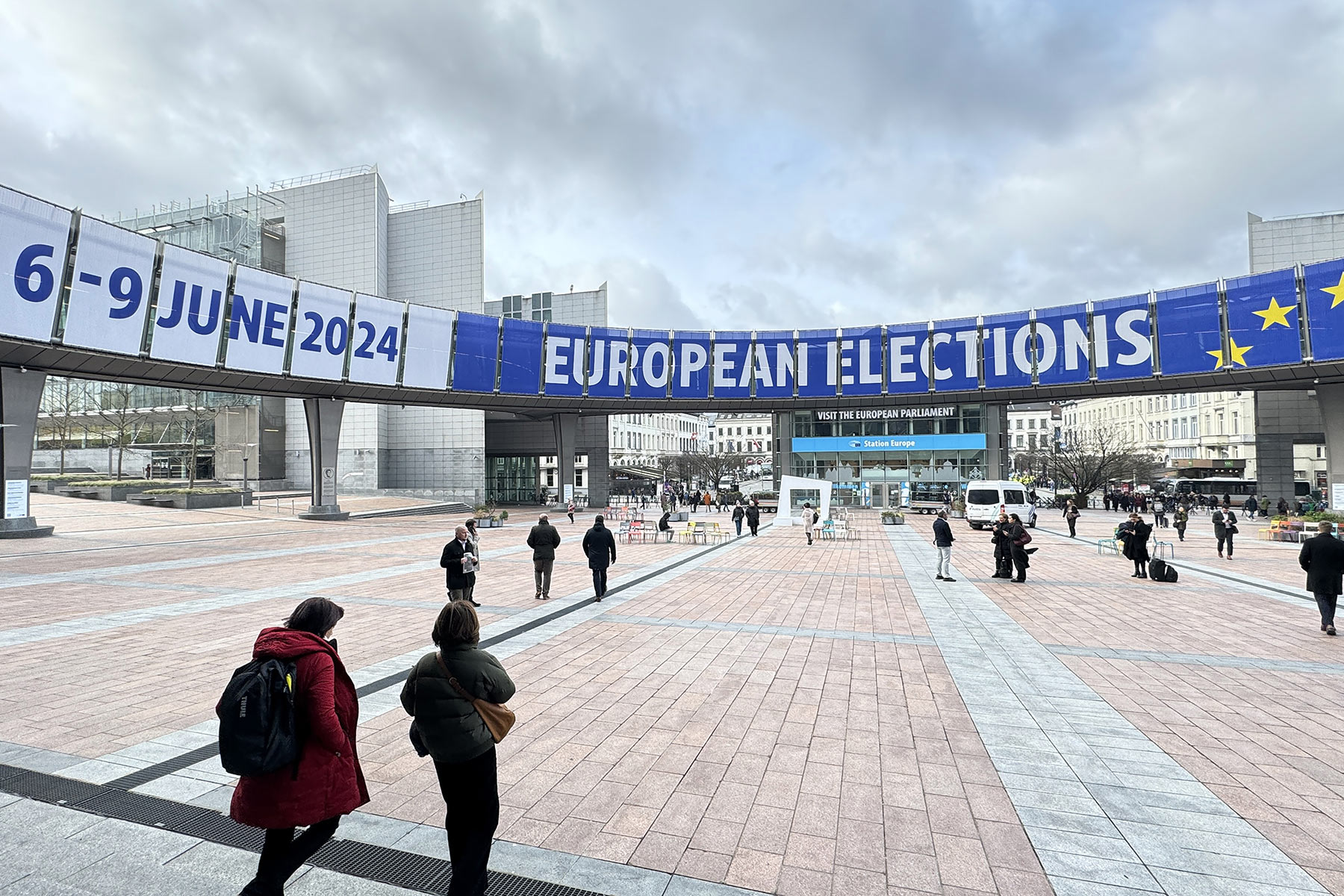Politics can be hard to get into when you move to a new country. However, it’s important to give it the old college try to see how everything works. After all, the party in government usually determines all of the key areas, such as healthcare, education, and taxation.
To help you get a basic understanding of how the Italian government works, here’s an overview of politics in Italy:
- The Italian government and political system
- The Italian Prime Minister: who is currently in power in Italy?
- Main political parties in Italy
- The electoral system in Italy
- Voting in Italy
- Political representation in Italy
- The history of the Italian government
- The judiciary system in Italy
- Recent Italian government reforms
- Political tensions in Italy
- The Italian government and the European Union
- The state of the Italian economy
- Grassroots politics and political activism in Italy
- Useful resources
Ground News
Get every side of the story with Ground News, the biggest source for breaking news around the world. This news aggregator lets you compare reporting on the same stories. Use data-driven media bias ratings to uncover political leanings and get the full picture. Stay informed on stories that matter with Ground News.
The Italian government and political system
Italy is a multi-party parliamentary republic with a political system based on its 1948 Constitution. It has a President (Presidente) as head of state, who appoints an Italian government based on democratic election results. The government, which has executive power, consists of a Council of Ministers (Consiglio dei Ministri or CdM) led by a Prime Minister.

Legislative power is exercised through two chambers:
- Chamber of Deputies (Camera dei Deputati) at Palazzo Montecitorio in Rome: 400 elected members
- Senate (Senato della Repubblica) at Palazzo Madama in Rome: 200 elected members
Parliamentary elections in Italy are every five years. The electoral system is a mix of first-past-the-post majority and proportional representation.
In addition to the central Italian government, there are 20 regional administrations. Five regions have greater political autonomy:
- Friuli-Venezia Giulia
- Sardinia
- Sicily
- Trentino-Alto Adige/Südtirol
- Valle d’Aosta
Italy ranks 34th on the 2023 Economist Intelligence Democracy Index and is categorized as having a flawed democracy. This is partly due to the Italian government not always performing well. The Italian government is seen as ideologically polarized, vulnerable to corruption, and having an ambiguous division of powers.
The Italian Prime Minister: who is currently in power in Italy?
The most recent elections in Italy were in September 2022. The center-right coalition (Coalizione di centro-destra) won a majority in both the Chamber of Deputies and the Senate. This was an improvement on their performance in the 2018 elections, where it was the largest bloc but failed to win an absolute majority.

Giorgia Meloni, the leader of the right-wing Fratelli d’Italia (Brothers of Italy) party, became Italian Prime Minister in October 2022. Sergio Mattarella has been the President of Italy since 2015, having won re-election in 2022.
The next Italian general elections are due to take place no later than 22 December 2027.
Main political parties in Italy
Brothers of Italy (FdI)
Fratelli d’Italia (FdI) is relatively new party, formed in 2012 from a faction that split from the People of Freedom Party (Il Popolo della Libertà). The FdI won the most seats in the 2022 elections. As a result, its leader since 2014, Giorgia Meloni, is now the Prime Minister. It is firmly on the right of the Italian political spectrum. FdI heads the center-right coalition that currently makes up the Italian government.
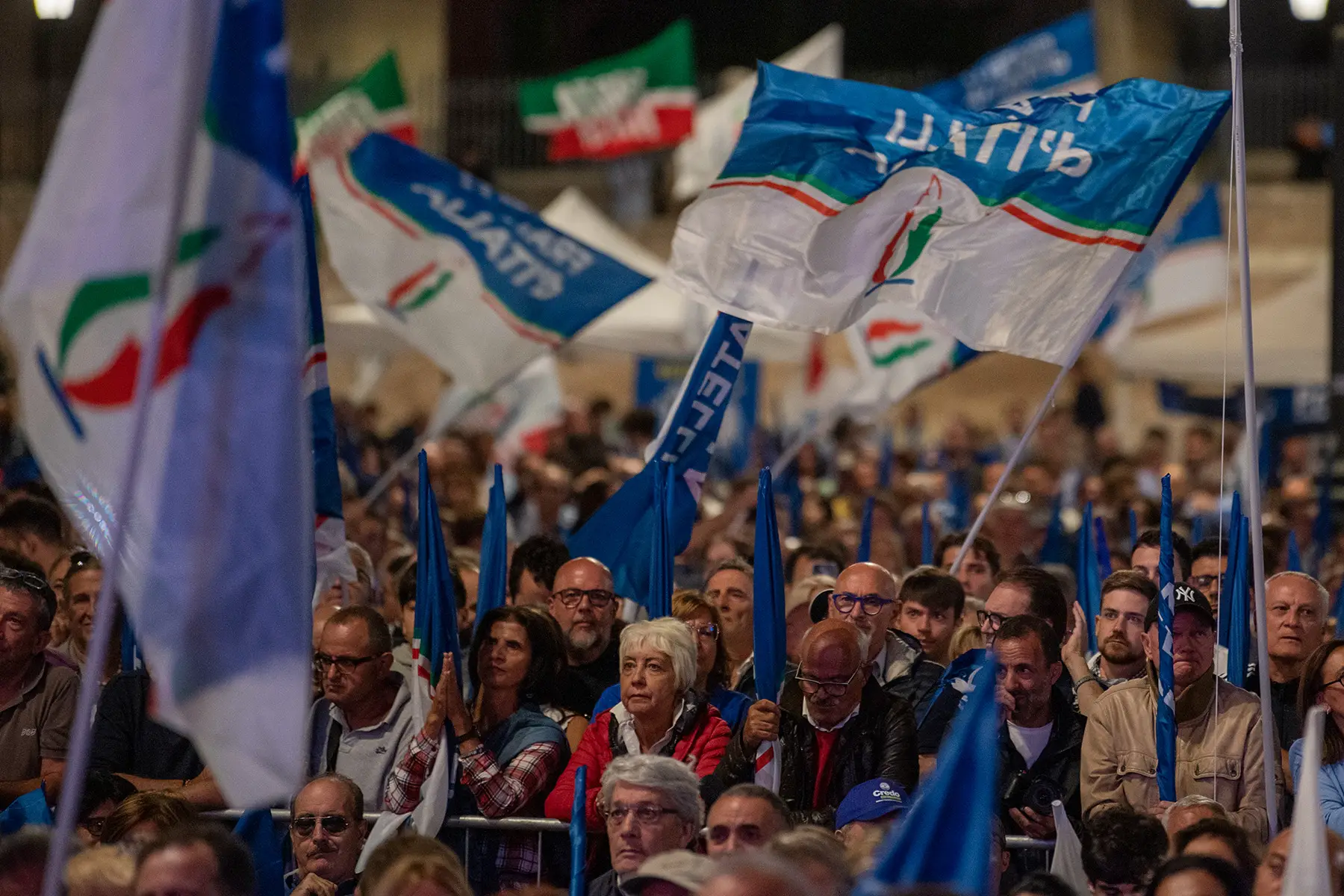
Described as a national conservative and right-wing populist party with links to the former far-right National Alliance (Alleanza Nazionale), the FdI is a eurosceptic party with socially conservative stances on issues such as abortion rights and gay marriage. FdI also wants to limit immigration to Italy. The party currently holds 118 seats in the Chamber of Deputies, 66 seats in the Senate, and eight seats in the European Parliament. This significantly increased from 32 Chamber seats and 18 Senate seats in 2018.
League
Formed in 2017 as a sister party to the longer-standing Lega Nord. Indeed, League (Lega) is an attempt by its northern relative to expand its horizons. Lega exchanged regionalism for a more nationalist approach along right-wing, liberal-conservative lines, espousing a free market economy with low taxes and socially conservative values. It is currently the second-biggest party in the center-right coalition Italian government. It has a similar stance to the FdI on immigration and European integration.
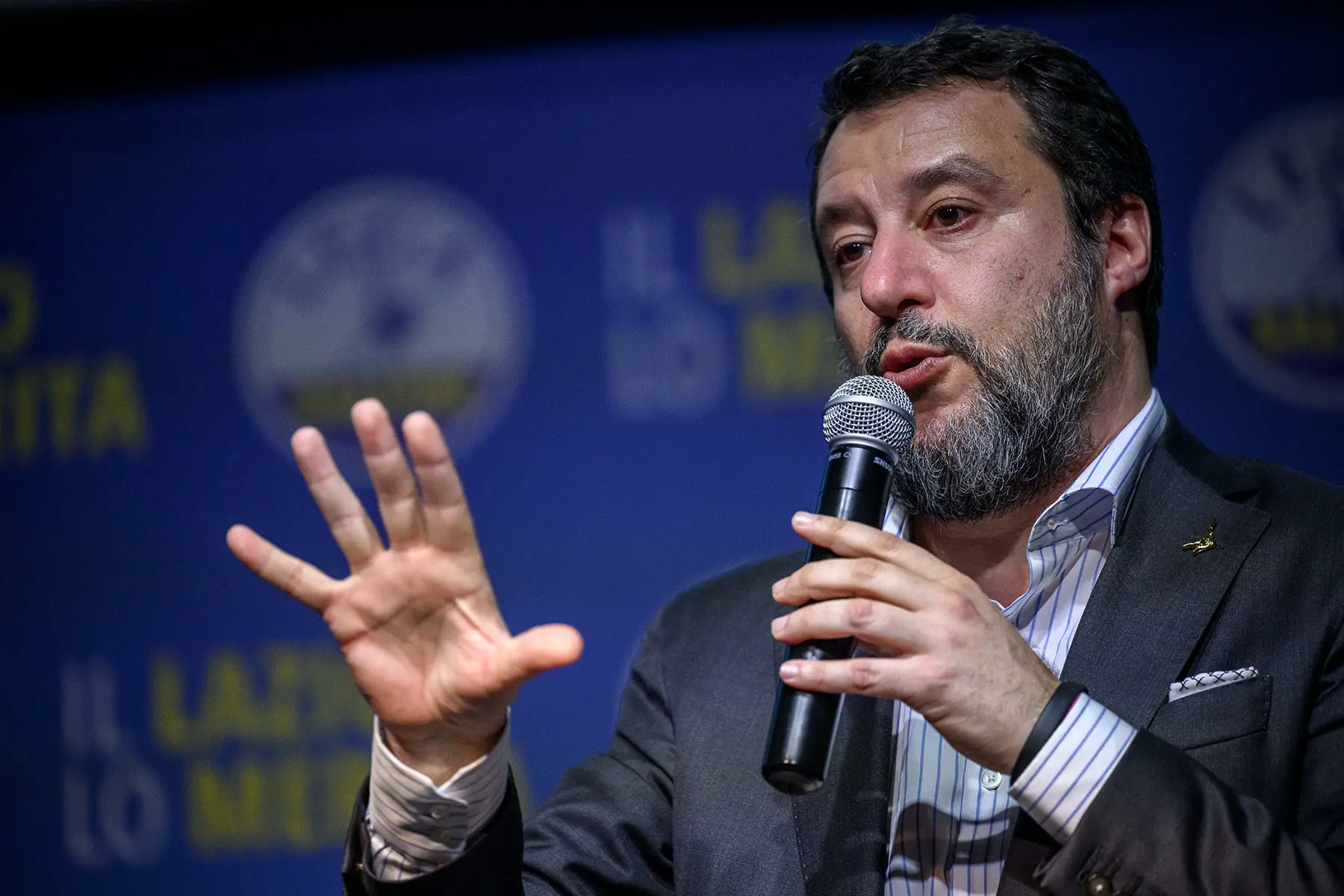
Matteo Salvini has led the party since its foundation. It holds 66 seats in the Chamber of Deputies, 29 seats in the Senate, and 25 seats in the European Parliament. Lega won more seats than any other Italian party at the most recent European elections.
Democratic Party (PD)
The Partito Democratico (PD) is the leading party in the opposition center-left coalition. It was in power from 2013 to 2018. However, it experienced a drop in popularity over the last decade, plunging from 297 Chamber of Deputies seats in 2013 to 69 seats in 2022. PD was a merger of other center-left parties in 2007. Its ideology sits somewhere between social democracy, social liberalism, and third-way politics.

Although it promotes progressive politics such as women’s and LGBT rights, climate-friendly policies, and a strong welfare state, PD has become more economically liberal in recent years, and took a stricter stance on immigration issues. Enrico Letta has led PD since 2021. In addition to its Chamber seats, it also holds 40 seats in the Senate and 19 in the European Parliament.
Five Star Movement (M5S)
Formed in 2009, the Movimento 5 Stelle (Five Star Movement) has avoided landing firmly on either left or right in Italian politics. However, its brand of populism struck a chord with the Italian public in the 2018 elections when it won 227 Chamber seats, more than any other party. The Five Star Movement currently holds 52 Chamber seats, 28 Senate seats, and 14 European Parliament seats.

The party has been part of both the left and right coalition Italian governments in its time. The current party leader, Giuseppe Conte, was Prime Minister from 2018 to 2021. The Five Star Movement’s ideology is based on five key standpoints:
- Common good
- Integral ecology
- Social justice
- Technological innovation
- A green economy
The party favors localist politics, direct democracy, and a basic income for all. However, its anti-European and anti-globalist stance has led it to adopt a strict approach against immigration.
Forward Italy
Translating loosely as “forward, Italy,” Forza Italia was revived in 2013 from the original party of the same name (1994 to 2009). The party’s leader is former PM Silvio Berlusconi, who was involved in the original incarnation of the party. Forza Italia is part of the current center-right coalition Italian government, with 45 seats in the Chamber, 18 in the Senate, and nine in the European Parliament. This is a drop in its support during the 2018 elections.
Forza Italia is conservative Christian in its ideologies, perhaps more moderately right-wing than some other parties in the coalition. They are generally against abortion and same-sex unions and oppose jus soli concepts of Italian citizenship. The party is more liberal on economic issues, supporting lower taxes and a smaller state. It is pro-EU.
Action
Azione is one of Italy’s two main liberal parties that formed after a split from the PD in 2019. Azione is the slightly more successful of the two in electoral terms, with 12 seats in the Chamber, four in the Senate, and one in the European Parliament. However, Azione formed a coalition with the other liberal party, Italia Viva, for the 2022 elections. Carlo Calenda has led the party since February 2022. Azione has a pro-European stance along with social and economic liberalism.
Italia Viva
The other new liberal party in Italy formed in 2019 after a split from the PD. Italia Viva classifies itself as a reformist party that marries traditional liberalism with a civil rights approach, gender equality, and globalism. Its leader is the former head of the PD, Matteo Renzi. Italia Viva currently has nine seats in the Chamber, five in the Senate, and one in the European Parliament.
Us Moderates
Noi Moderati is a centrist alliance party bloc within the current center-right Italian government. It consists of 11 smaller and regional parties that are mostly moderately conservative in their approach. The bloc formed shortly before the 2022 elections, winning seven seats in the Chamber of Deputies and two in the Senate. Maurizio Lupi is the alliance’s leader.
The electoral system in Italy
Italy’s electoral system has undergone many reforms in recent decades. The current system uses a mix of first-past-the-post single-member majority and party-list proportional representation for electing representatives for both parliamentary houses. Elections are every five years. However, they can occur early in the event of a dissolution of parliament (this happened in 2022).
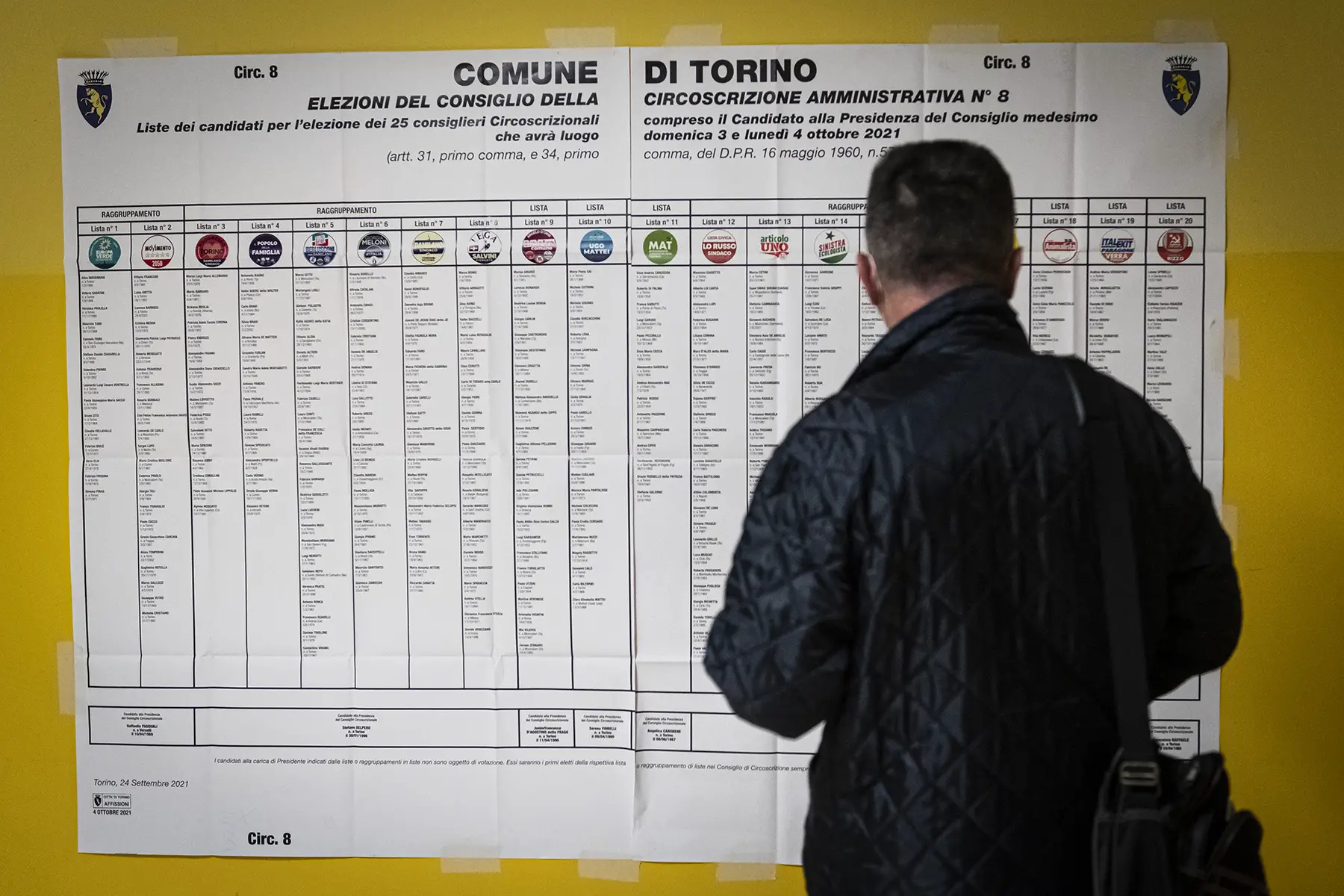
Currently, the Chamber of Deputies has 400 members, and the Senate has 200 members. Around 62.5% (245 MPs and 122 senators) are elected through proportional representation, where voters choose a party linked to a list of candidates. Seats are then allocated based on percentage vote share. The remaining 37.5% (147 MPs and 74 senators) are elected using first-past-the-post in single-member constituencies, where voters elect an individual representative.
Voters get two votes in a single round: one for the Chamber of Deputies and one for the Senate. Each party representative can feature on up to five party lists in addition to being on one single-member constituency list.
The election winner is the party (or coalition) that achieves an overall majority: 201 for the Chamber of Deputies, and 101 for the Senate. If there is no majority, then a minority or a national unity government forms. In this case, the leading party operates with the support of other parties. The president then appoints a prime minister (usually the leader of the party with the most votes), who then chooses a Council of Ministers to head the various Italian government ministries. There are currently 15 government ministries in total.
The Italian president is elected every seven years. Ballots are cast by an electoral college made up of MPs, senators, and regional council officials.
In addition to parliamentary and presidential elections, Italy also holds regional elections within its 20 regions. Municipal elections also occur within local communes.
Voting in Italy
Only Italian citizens aged 18 and above can vote in national general elections. European Union (EU) citizens can vote in European Parliament elections and local elections. Registration of Italian citizens is automatic, and they should receive their voter card (tessera elettorale) when they turn 18. Non-citizens can register to vote through their local commune.
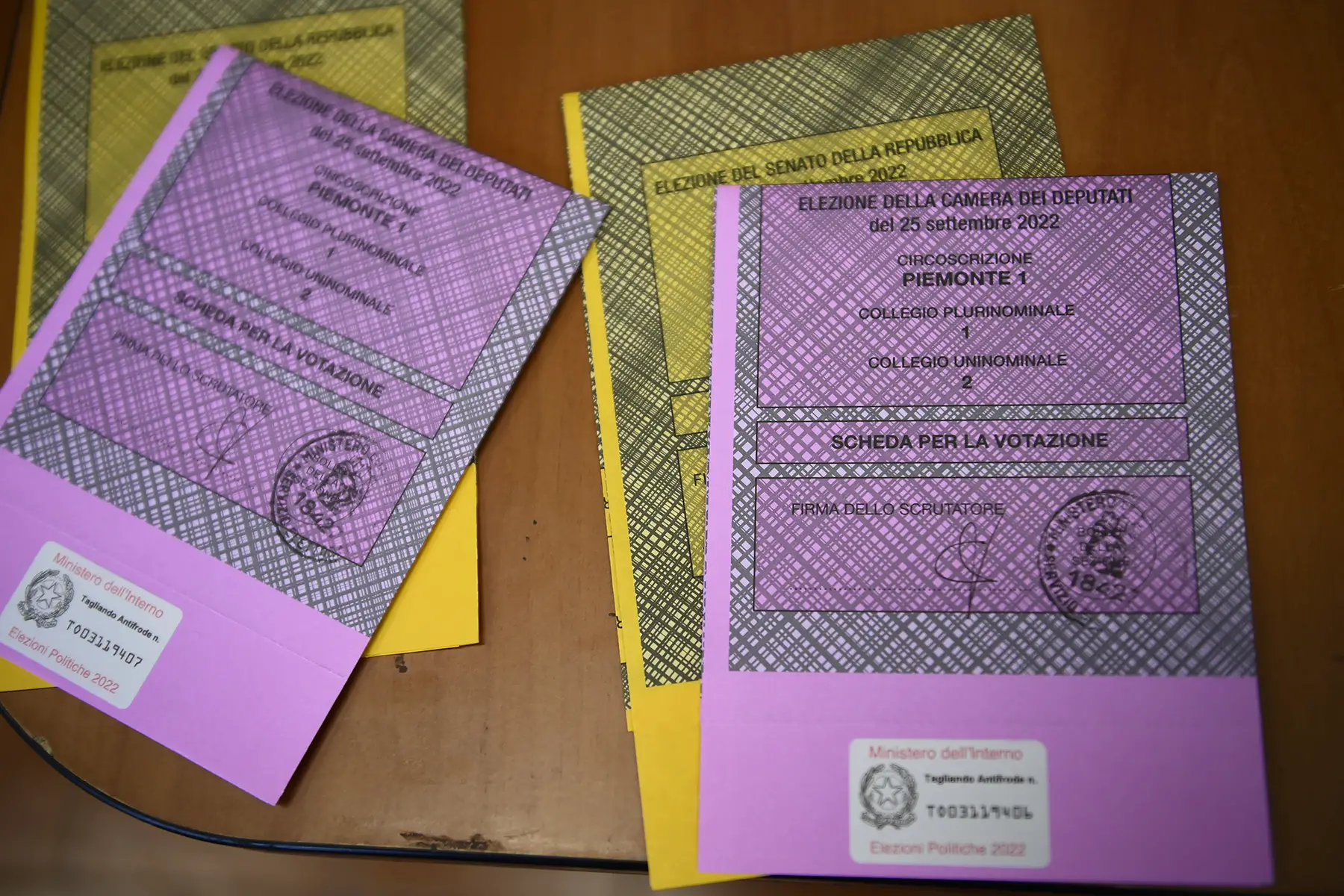
Italian residents abroad can vote by mail as long as they register through the Anagrafe degli Italiani Residenti all’Estero (A.I.R.E.). This is available through Italian embassies and consulates overseas. Proxy voting is not possible in Italy.
On voting day, voters visit their local polling station with a valid form of identification and their voter card.
Political representation in Italy
You can stand in a general election in Italy if you are an Italian citizen aged 25 or over and haven’t been convicted of a serious criminal offense. EU citizens can stand for office in elections for the European Parliament and local municipalities.
In terms of representation, Italy has introduced measures to reduce gender inequalities regarding elected officials. Political parties cannot put forward more than 60% of either gender in their total candidates contesting first-past-the-post seats. For proportional representation seats, there is an alternating system. In other words, a male nominee must be followed by a female nominee, then a male nominee, and so on. According to data from the Inter-Parliamentary Union, Italy ranks 56th globally in terms of women in parliament, with women making up 32.3% of the total.
Ethnic minorities in Italy remain politically under-represented, with only one black MP in the current parliament.
The history of the Italian government
The modern Italian political system goes back to the early post-war years and the 1948 Constitution. This was the start of the bicameral republican system following the fall of the fascist regime of Benito Mussolini. The years since the Second World War have been quite tumultuous politically for Italy. There have been 68 post-war governments in total. Despite the chaos, the Christian Democracy (Democrazia Cristiana) party was the dominant force throughout most of the second half of the 20th century. Communist and socialist parties also joined Italian government coalitions periodically. On either side of mainstream politics, extremist terrorist movements gained much support during the Years of Lead (anni di piombo).

Italian governments in the modern era have mostly been coalitions or national unity governments where parties rule with external support. The last time a single political party was in power, was in 1987, when the Christian Democracy party ruled a minority government for 102 days. Following a corruption scandal in the early 1990s, the main political parties disbanded or transformed. The subsequent overhaul of the Italian political system was so far-reaching that analysts have referred to Italy as the Second Republic since 1994. Since then, the Italian government has been either a center-right, center-left, or mixed coalition or unity government (including three periods with Silvio Berlusconi as Prime Minister). The current Meloni-led government is a center-right coalition.
The judiciary system in Italy
Italy’s judiciary system is one of three separate branches of the state, along with the executive (Italian government) and the legislative (two houses of parliament). The source of Italian judicial law is the country’s 1948 Constitution, based on Roman Law, which forms the foundation of modern civil law.

The Italian court system is hierarchical and consists of three tiers:
- First tier (primo grado): this includes the civil courts (Giudice di Pace) for less serious matters, the criminal courts (Corte d’Assise) for more serious criminal cases, and tribunals (Tribunale)
- Second tier (secondo grado): this includes the Court of Appeal (Corte d’appello) and the Court of Assize Appeal (Corte d’assise e d’appello)
- Third tier (terzo grado) or last resort (ultima istanza): this includes the Supreme Court of Cassation (Corte Suprema di Cassazione), which is the highest court in Italy
Although the judiciary is separate from the other branches of government, the Ministry of Justice is the government department in charge of formulating judicial policy. Supreme court judges in Italy are appointed by the High Council of Judiciary, which the Italian president chairs. Only Italian citizens can become judges in Italy.
Recent Italian government reforms
The political system in Italy has undergone several reforms in recent decades. Most recently, the key reforms have been the 2017 electoral law reform and the 2020 constitutional referendum. The Rosatellum reforms, proposed by former DP leader Errore Rosato, introduced the mixed voting system in a single round of voting for both Chamber of Deputies and Senate elections. This replaced the previous two-round voting system based on party-list proportional representation.
The 2020 constitutional referendum, approved by just under 70% of the electorate, reduced the number of parliamentary seats in Italy by over one-third. Chamber of Deputies seats were reduced from 630 to 400, while Senate seats declined from 315 to 200.
Political tensions in Italy
Italy’s most recent political unrest was in July 2022, resulting in the government’s collapse and snap elections. This occurred when the Five Star Movement withdrew support for the national unity government over the financial support package offered in response to economic and energy crises. Problems were exacerbated by disagreements between the main parties over the following:
- Military aid to Ukraine (i.e., Forza Italia and Lega are both sympathetic towards the Russian government)
- Response to refugee rescue boats arriving from Libya
- Environmental policies

Italian Prime Minister Mario Draghi resigned after failing to win an absolute majority in a confidence vote, resulting in the fall of the third Italian government since the 2018 elections.
Subsequent elections saw the center-right coalition win an absolute majority in both houses, headed by the FdI. Although the coalition itself is center-right, there are many concerns about the FdI’s links to the far-right. The new Italian Prime Minister, Giorgia Meloni, has sought to distance herself from extreme right-wing politics, although both she and Lega leader Matteo Salvini expressed support for Hungary’s right-wing populist leader Viktor Orbán. There have also been tensions within the current coalition since coming to power, which suggests further instability ahead.
The Italian government and the European Union
Italy was a founding member of the EU and has been part of the bloc since 1958. It has 76 Members of the European Parliament (MEP), and representatives on the Economic and Social Committee and the Committee of Regions. However, Italy is one of several member states where Euroscepticism is strong. According to a 2019 survey by Pew Research, favorable opinions on the EU actually decreased by 20% between 2007 and 2019, from 78% to 58%. Despite the tumble in support, Italians seem to be falling in love once more; data from 2022 saw support rise to 71%.
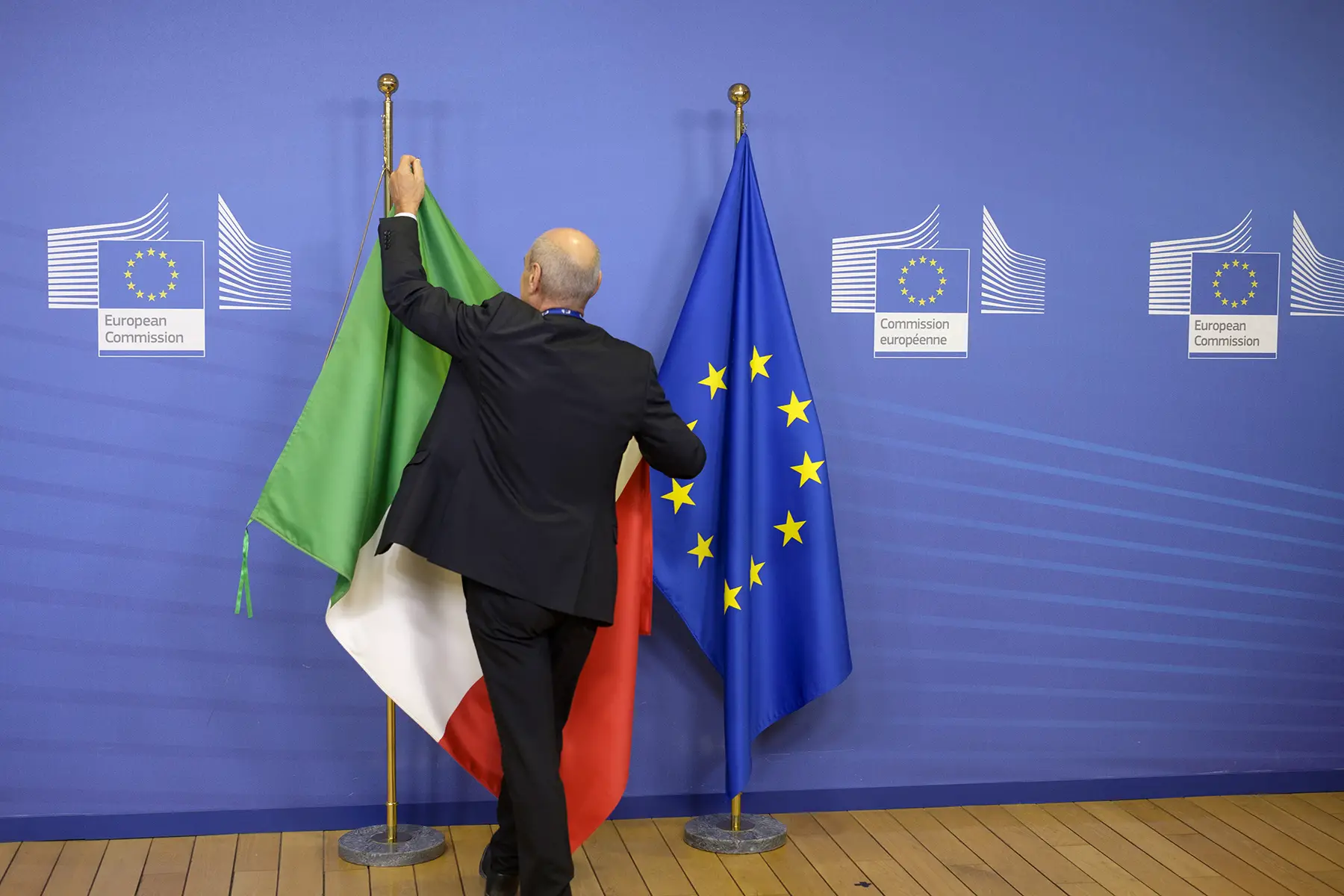
Although the two biggest parties in the current Italian government espouse an anti-EU ideology, it is unlikely that it will follow the United Kingdom (UK) in withdrawing from the bloc (i.e., Brexit) anytime soon. Only 45% of Italians express support for leaving the EU if the UK’s exit seems positive after five years, while only 31% say they would vote to exit in a referendum (compared to 43% who say they would vote to remain).
The state of the Italian economy
Italy’s highly developed social market economy is the third-largest in the EU. It had an overall gross domestic product (GDP) of $2.7 trillion in 2021, with $45,902 per capita when adjusted for purchasing power parity. Italy’s service sector accounts for over two-thirds of GDP, with tourism of particular importance. According to 2020 data from the United Nations Statistics Division, Italy is the seventh-biggest manufacturing country in the world, with Italian-made goods amounting to about US$280 billion. Italy’s automotive industry is large and influential; according to the International Organization of Motor Vehicle Manufacturers, Italy is Europe’s eighth-largest producer. The agriculture sector remains strong and Italy is currently the world’s largest wine producer and second-largest exporter.
As with many of the world’s economies, Italy suffered during the COVID-19 pandemic. However, the most recent OECD report on Italy suggests that the country’s economy recovered well. The biggest challenges to economic growth are currently high inflation, increasing interest rates, and high energy, which are all increasing Italy’s cost of living. The unemployment rate is currently 7.8% as of November 2022, with youth unemployment at 23%. This is higher than most EU countries except Spain and Greece.
Grassroots politics and political activism in Italy
Italy has a strong culture of grassroots political activism. However, much of this tends to be localized, and there doesn’t exist any central directory of movements. Mobilization tends to happen at the local level or on social media. More well-known groups include Potere al Popolo (Power to the People), a coalition of left-wing organizations formed in opposition to the rise in far-right politics in Italy in recent years. Another anti-fascist platform promoting active citizenship and non-violent protest is the Sardines Movement, which started as a flashmob protest against the Lega party in 2019.

In terms of environmental activism, Extinction Rebellion (XR) is active in Italy. XR also supports another grassroots eco-organization, Last Generation (Ultima Generazione). Many groups have also emerged in recent years to advocate for women’s sexual and reproductive rights. These include Objection Rejected (Obiezione Respinta) and the transfeminist group Non Una di Meno (Not One Less).
If you are interested in getting involved in grassroots politics in Italy, check the local networks, including community centers and online spaces. You can also contact your communal authority if you want to get involved locally through more conventional channels.
Useful resources
- Governo Italiano – information on the government and the Council of Ministers
- Chamber of Deputies – website for the lower house of the Italian parliament
- Senato della Repubblica – website for the Italian Senate


